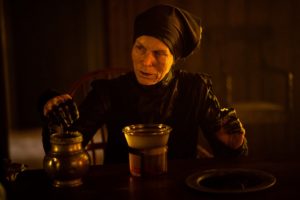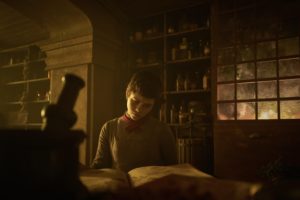Gretel & Hansel Gets Lost in Its Beautiful Woods
Gretel & Hansel falters due to its razor thin story and lack of characterization. It loses sight of horror’s key rule: In order to create an effective tale, characters and emotions must be emphasized.
Gretel & Hansel (2020)


Published in 1812, the story of Hansel and Gretel has been passed down from generation to generation, latching onto storytellers like a monstrous addiction. It’s a powerful form of fantasy and horror, focused on the exploits of a brother, sister and cannibalistic witch. Now, after years of incarnations, filmmaker Oz Perkins (the son of the late great Anthony Perkins), is throwing his hat into the Hansel and Gretel ring with Gretel & Hansel.

Perkins has formed an attractive piece of genre filmmaking with Gretel & Hansel, able to hold its own against any visual entity. The natural setting is a visual feast for the eyes, evoking the atmospheric uncertainty that comes with sudden journeys. Throughout the flick, characters, structures and objects are perfectly centered, giving off visually consistent vibes. Many of these shots are beautiful to look at, but as the narrative moves forward, these placements become tiresome. Instead of utilizing kinetic energy that engages the audience, Gretel & Hansel sticks with stunning forms of stagnancy.
Gretel & Hansel falters due to its razor thin story and lack of characterization. It loses sight of horror’s key rule: In order to create an effective tale, characters and emotions must be emphasized. Because of the film’s pretentious methodology and stale representations, the relationship between brother and sister feels unnatural. And that, my friends, is a recipe for disaster.

As Gretel, Sophia Lillis puts her best foot forward, but even she cannot breathe life into this hollow rendition. The character of Hansel is even worse. He lacks any sense of personality and embodies cinematic irritation. For all intents and purposes, the film does its best to make us despise him.
As the witch, Alice Krige brilliantly steps into the shoes of evil, giving us a visually arresting villain. Her interpersonal delivery and creature-like mannerisms paint an accurate portrait, but the story’s utilization of said character is unfulfilling. The surrounding visuals form a mythologically rich atmosphere, but the ensuing events are downplayed. In other words, the witch is all bark and no bite.
Quite frankly, it’s a shame. If Gretel & Hansel would have matched its visuals with terrific figures, we would have been in for something special. The female characters are front and center in this film, and yet they lack potency and detailed exploration. We receive simple messages which comment on female individuality and maturation, but unfortunately these elements are not fleshed out. Though this film could score points for diversity, the way it portrays the women in the story leaves it ultimately lacking in any grander message. Once again, we are reminded that substance is the key to cinematic success.

Originally published by Dillon McCarty for Incluvie on February 9, 2020.
More to explore
By Same Author
Related lists created by the same author
By Cluvie Category
Related diversity category
'Werewolf By Night' (2022)
This horror, action, and fantasy movie released on Disney+ has a symbolic aspect.
By General Category
Related movie/TV/List/Topic
The 'Bigfoot Family' is Back in Town
The sequel following The Son of Bigfoot explores Adam's conflict of discovering his true identity as he tries to save a wildlife preserve.





